Accepted Scientific Name: Lophophora diffusa (Croizat) Bravo
Cact. Suc. Mex. 12: 13. 1967

Lophophora williamsii var. diffusa (Lophophora diffusa) Photo by: Agócs György
Origin and Habitat: This is the southernmost population of Lophophora endemic of the of the state of Querétaro, México it grows only in a small area in the hight desert in a valley between Vizarron, Bucareli, and Toliman (Extent of occurrence about 300 km²). L. diffusa occurs at the south end of the range of the genus.
Altitude: It grows at an elevations of 1,300 to 1,800 metres above sea level.
Habitat and Ecology: Driest and stoniest desert Xerophytic shrubland, on calcareous soils where the soil is deep enough to allow the tuberous root to grow. L. diffusa grows mainly beneath the canopy of some locally dominant shrub and possible nurse plant (e.g. Larrea tridentata and Acacia sororia). The species is threatened by illegal collecting and use by indigenous people for medicine, and by collectors for ornamental trade.
Synonyms:
See all synonyms of Lophophora diffusa
back
Accepted name in llifle Database:Lophophora diffusa (Croizat) BravoCact. Suc. Mex. 12: 13. 1967Synonymy: 18
back
Common Names include:
ENGLISH: False peyote, Peyote
SPANISH (Español): Peyote de Querétaro, Peyote queretano
Description: Globular spineless cactus with large tap root. Solitary or forming variable stemmed clumps with few stems or sometime large mounded group with several heads. This is the more primitive species of Lophophora.
Stem: 2-7 cm tall, 5-12 cm in diameter (some population have larger stems up to 20-25 cm in diameter) Yellow-green or grey-green, usually lacking well-defined ribs and furrows.
Ribs: 5 to 13 the podaria are rarely elevated, wavy, broad and flat.
Areoles: With tufts of hairs that usually spread unequally on the prominent podaria.
Flowers: Commonly whitish to yellowish-white (or pinkish white), 1,5-3 centimetres in diameter.
Note: Lophophora diffusaSN|1117]]SN|1749]] is geographically isolated, but questionably distinct from Lophophora williamsiiSN|1749]]SN|1117]].
Notes: This is a relative of Lophophora williamsiiSN|1117]]SN|1117]], the true Peyote. It has many morphological and chemical differences and does not contain the same substances as L. williamsii. This species contains none to trace amounts of mescaline as the Peyote. But it does contain a lot of other alkaloids the principal of which is pellotine. It is not narcotic and is not specifically named in the law, and probably legal to possess.
Bibliography: Major references and further lectures
1) Gómez-Hinostrosa, C., Sánchez , E., Guadalupe Martínez, J. & Terry, M. 2013. Lophophora diffusa. In: IUCN 2013. “IUCN Red List of Threatened Species.” Version 2013.2. <www.iucnredlist.org>. Downloaded on 24 February 2014 .
2) Edward Anderson “The Cactus family” Timber Press, Incorporated, 2001
3) James Cullen, Sabina G. Knees, H. Suzanne Cubey "The European Garden Flora Flowering Plants: A Manual for the Identification of Plants Cultivated in Europe, Both Out-of-Doors and Under Glass" Cambridge University Press, 11/Aug/2011
4) David R Hunt; Nigel P Taylor; Graham Charles; International Cactaceae Systematics Group. "The New Cactus Lexicon" dh books, 2006
5) Edward F. Anderson “Peyote: The Divine Cactus” University of Arizona Press, 1996
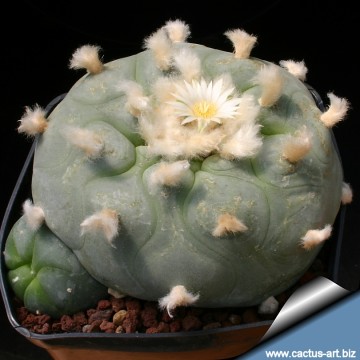 Lophophora williamsii var. diffusa (Lophophora diffusa) Photo by: Cactus Art
Lophophora williamsii var. diffusa (Lophophora diffusa) Photo by: Cactus Art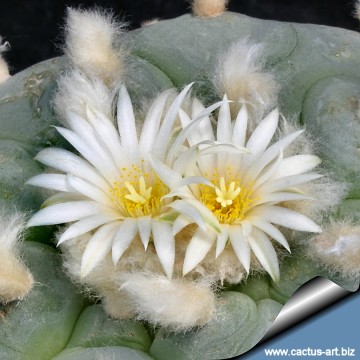 - VM 205 North of Vizarrón, QRO, Mx. (Lophophora diffusa) Photo by: Cactus Art
- VM 205 North of Vizarrón, QRO, Mx. (Lophophora diffusa) Photo by: Cactus Art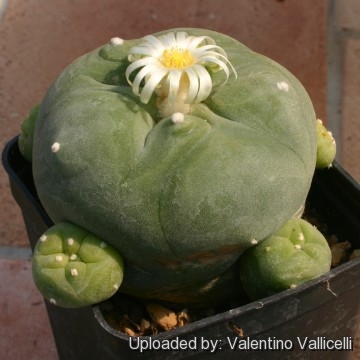 Lophophora williamsii var. diffusa (Lophophora diffusa) Photo by: Valentino Vallicelli
Lophophora williamsii var. diffusa (Lophophora diffusa) Photo by: Valentino Vallicelli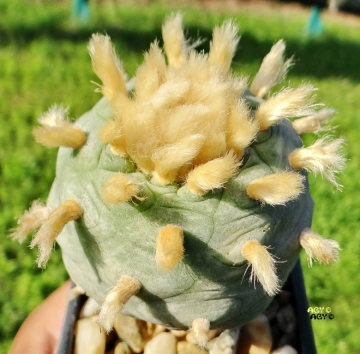 Field number MK85.255 (North of Vizarron, Queretaro, Mexico) (Lophophora diffusa) Photo by: Agócs György
Field number MK85.255 (North of Vizarron, Queretaro, Mexico) (Lophophora diffusa) Photo by: Agócs György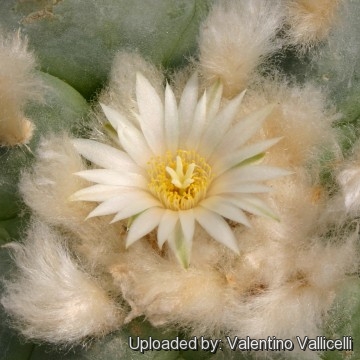 Lophophora williamsii var. diffusa (Lophophora diffusa) Photo by: Valentino Vallicelli
Lophophora williamsii var. diffusa (Lophophora diffusa) Photo by: Valentino Vallicelli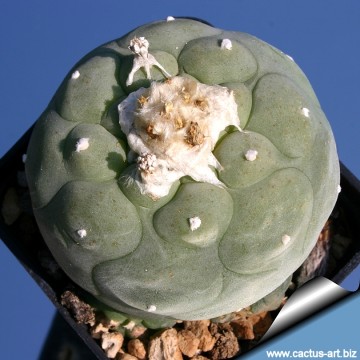 Lophophora williamsii var. diffusa (Lophophora diffusa) Photo by: Cactus Art
Lophophora williamsii var. diffusa (Lophophora diffusa) Photo by: Cactus Art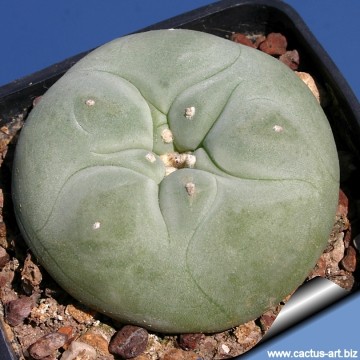 Field number VM 23 Queretaro, QRO, Mexico. (Lophophora diffusa) Photo by: Cactus Art
Field number VM 23 Queretaro, QRO, Mexico. (Lophophora diffusa) Photo by: Cactus Art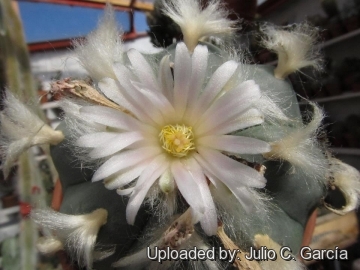 Lophophora williamsii var. diffusa (Lophophora diffusa) Photo by: Julio C. García
Lophophora williamsii var. diffusa (Lophophora diffusa) Photo by: Julio C. GarcíaCultivation and Propagation: Slow growing Requires half shade in summer, full sun the rest of the year.
Grow it in a narrow and deep container to accommodate the tap root, they are very rot prone, so use highly gritty compost with much drainage.
Waterings should be rather infrequent to keep the plant compact and not to become excessively elongated and unnatural in appearance, watering it properly is often difficult because this plant tends to crack open or rot if over-watered. The fact that the plant retracts into the soil and assume a grey-green colouring between watering, is perfectly natural and doesn’t cause any damage.
Like other arid zone cacti, they require a dry and cool over-wintering otherwise they may succumb to rot. It also promotes flowering. Assure a good ventilation.
Propagation: Seeds.
Seed should be sown in spring in sterile cacti mix. Cover with a humidity dome or plastic wrap and leave in a warm spot in 50-75% shade. Fluctuating temperatures are best (ie. high day temperature and low night temperature) as they simulate the desert environment.
Keep constantly humid as seedlings cannot survive if to dry. Seedlings will emerge in 7-21 days and can be grown in the same environment for a number of months. Mulch with thin layer of small quartz gravel (1-2mm diameter) this helps them stay upright, hinders algae growth and regulates moisture. As they get older the watering can become less frequent. Potting up can be done when 5-10mm in diameter.
Your Photos
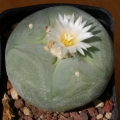
by Valentino Vallicelli
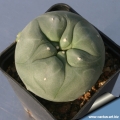
by Cactus Art




















